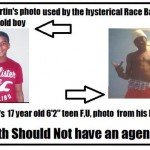After a particularly emotionally exhausting day last week, I asked my husband to tell me something that would comfort me.
“In a few days you get to see kids kill each other on screen,” he promptly replied.
It’s true that I’ve been eagerly anticipating The Hunger Games movie for weeks, if not precisely for that aspect of it—but the patent ridiculousness of the statement made me laugh, which was the desired effect. Yet this exchange illustrates one of the biggest dilemmas for The Hunger Games franchise: how do you visually represent teens being forced to fight to the death for the entertainment of a TV audience without making movie theaters across America a mirror for Suzanne Collins’s dystopian society? Or do you completely pursue the meta angle, “implicating” viewers in the violence by making them realize that they’re just like the Capitol viewers in their hunger for adolescent gore? The latter approach, I think, is often a pretentious and fundamentally dishonest cop-out. Furthermore, I don’t think it would really work in a film whose primary audience is, like it or not, young teenagers.
Marketing for The Hunger Games was surprisingly sensitive to the hypocrisy of selling the movie based on violence. Marketing director Tim Palen determined that the trailers should show almost nothing from the Games themselves, focusing instead on the Reaping, in which Katniss volunteers as a tribute to keep her younger sister from being sent into the bloodbath of the arena. “These kids are victims,” Palen insists. He and his team also worked to prevent the phrase “Let the Games Begin” from being used in publications covering the movie, believing that it would imply eagerness for a competition that shouldn’t be glorified. (Palen doesn’t seem entirely consistent on this point, though, as he also says, “Everyone liked the implication that if you want to see the games you have to buy a ticket,” suggesting that withholding the violence from the trailer would make the movie violence itself all the more desirable. We are the Capitol, and there’s no escaping that. But it’s nice to see at least a half-hearted effort not to be.)
Is the violence in the movie itself handled with at least comparable semi-sensitivity? The short answer is yes, and no doubt some viewers will find that disappointing, for a variety of reasons. I, for one, am relieved that director Gary Ross aimed for depictions of violence and death that steered clear of emotional manipulation. The tributes’ deaths are not used, either to titillate us or to teach us a nice lesson about how bad violence is. They just happen. You see snapped necks and dead bodies, but the camera doesn’t linger. (The one exception, of course, is the character in whom we feel an emotional investment, and even that scene was dealt with far more matter-of-factly—or at least hastily—than in the book.)
The Hunger Games’s filmmakers wisely decided to include a scene before Katniss arrives at the Capitol, in which she catches televised footage of previous games. The way that commentators Caesar Flickerman and Claudius Templesmith milk the most out of the moment when tribute kills his last standing competitor (Katniss switches off the TV in disgust) forms an effective contrast to the way the movie itself handles the subject matter. To include a bit more biting satire, it might have worked to interlace more inappropriate and manipulative commentary from these two with the actual scenes in the arena (they’re already used to fill in a few details—such as the fact that tracker-jacker venom is extremely painful and causes hallucinations—that were revealed through Katniss’s first-person narration in the book). This approach might easily have backfired, however.
While still largely preserving Katniss and fellow District 12 tribute Peeta from moral responsibility in the few deaths they (sometimes unwittingly) cause, the film adds a couple of touches of welcome ambiguity. In a scene following Katniss’s first direct kill, she rubs blood off her hands, suggesting guilt, even if her actions were in defense of another. More surprisingly, “career” tribute Cato, who has spent his whole life training to compete in the games and emerge as victor, and who generally comes across as a one-note bully, has been given a speech in which he questions whether he too is a pawn of the Capitol.
Jennifer Lawrence’s portrayal of Katniss is masterful in conveying both her reluctance to take part in the games—or to reveal anything of her true self to the Capitol audience she so despises—and the survival instinct that sometimes overpowers this reluctance. Josh Hutcherson’s Peeta, is, unfortunately, less complex, though it’s not clear how much of this is due to the acting and how much of it is due to the script (which would be odd, considering that Collins herself was one of the screenwriters). Either way, movie-Peeta comes across more as hopeless and lacking in self-confidence (that cardinal millennial dilemma) than strong in his determination to sacrifice himself for another.
As an adaptation of the book, the movie served as a reminder that the most memorable aspects of the book were also the most unfilmable. A certain tear-inducing gift parachuted to Katniss makes no appearance in the film: it would require too much explanation. Instead, the repetition of a symbolic gesture from earlier in the movie conveys something of the same sense of humanity triumphing over the games’ brutality. Katniss’s ability to know what her mentor Haymitch wants her to do in the arena by the timing or withholding of his gifts—which in the novel struck me and at least one other reader as incredibly reminiscent of how God communicates with us—can’t be translated well into film, and so his gifts appear with notes. I won’t say too much about the other noticeably missing moment for fear of spoilers, but for the initiated, let’s just say: don’t be looking for faces on the muttations. I don’t see how this could possibly have been rendered without being cheesy, so I’m glad it was omitted.
Ultimately, I’m left with respect, if not awe, for the decisions made by the filmmakers in The Hunger Games, both with regard to adaptation and to the depiction of violence: their choices seem carefully considered and rationally pursued. Of course, no amount of consideration will keep viewers from wallowing in or being desensitized to violence, if that’s their inclination. At the early Saturday afternoon showing we attended, I was outraged to see that not one but two families in our general vicinity had brought children who appeared to be no more than five years old. As the older family members wandered in and out of the theater in pursuit of popcorn during the movie’s two and a half hours, it became apparent that the five-year-olds were not going to be discomfited in the least by what they saw on screen. This was possibly more horrifying than anything in the movie itself. We are already living in the Capitol of Panem, and a movie that suggests the parallel, while refraining from either a knowing sneer or a pedantic lecture, is welcome. Like solid, yet rhetorically savvy Peeta, the movie can’t help but play in the Capitol’s games—but it can try to do so as ethically as possible.












